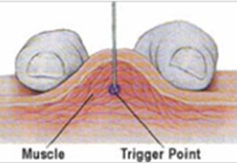FAQs
- tothepointrecovery
- May 23
- 2 min read
Updated: Jun 4
What should I expect from dry needling?
Successful dry needling involves precise palpation of muscles to locate the trigger point or muscular knot. Upon inserting the needle into this point, the muscle tissue will respond by jumping or twitching. The needle is then maneuvered to provoke multiple jumps/twitches to completely release the muscle. Soreness is a common side effect of this procedure.
How does it work?
When inserted into a trigger point, the needle will cause the muscle fibers to jump or twitch. This action causes the muscle to relax fully. This increases blood flow within the muscle and reduces the inflammation in the area.

Does dry needling hurt?
Due to the very thin needles used, the discomfort from dry needling is not comparable to that of an injection or blood draw. When a needle is inserted into a trigger point, it causes the muscle to twitch. This twitching is the uncomfortable aspect, but it is what helps relax the muscle and provides pain relief.
How long does a dry needling session take?
Treating a single muscle takes under a minute. Consequently, the overall duration depends on the number of muscles requiring treatment. Most sessions last under 15 minutes.
What are the risks?
Bruising and bleeding may occur at the site of needling. The greatest risk arises when treating the muscles around the ribs. If the needle slips between the ribs, air or blood can accumulate between the chest wall and lungs, leading to a pneumothorax.
Another potential risk is nerve injury if the needle pierces a nerve, causing persistent numbness or tingling. Although both pneumothorax and nerve injury can be uncomfortable, they will resolve over time. These risks highlight the importance of choosing a provider who is certified in dry needling. Certification ensures a comprehensive understanding of anatomy and the demonstration of proper techniques.



Comments